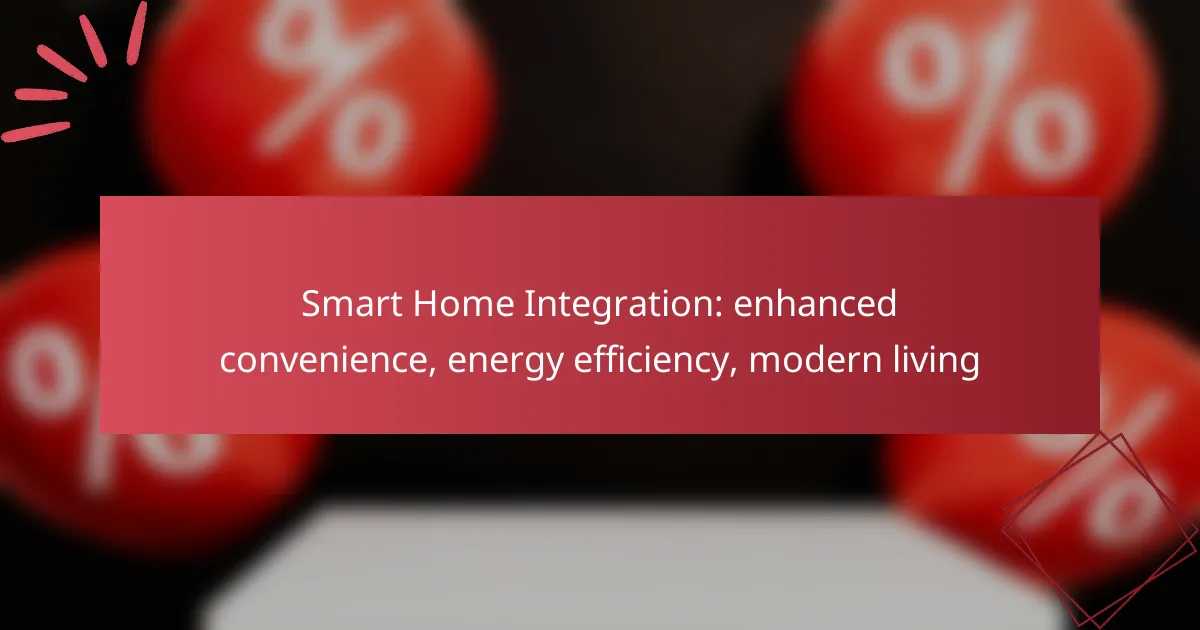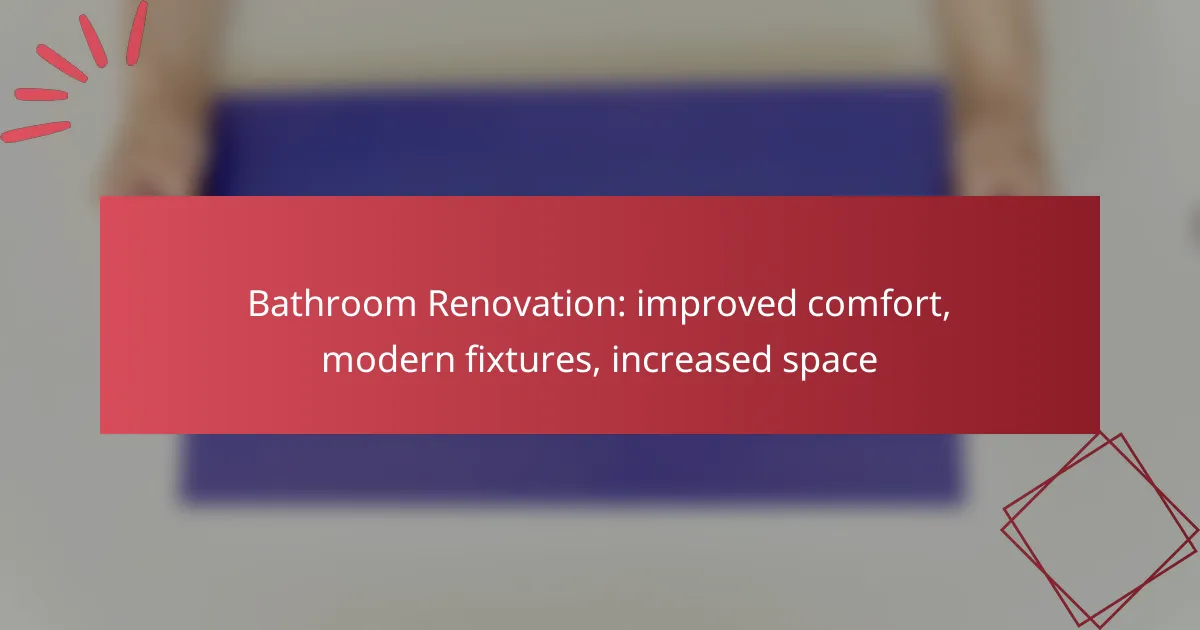Smart home integration transforms modern living by enhancing convenience, energy efficiency, and security. By automating daily tasks and enabling centralized control of devices, homeowners can effortlessly manage their environments. This technology not only streamlines household operations but also optimizes energy consumption, leading to reduced utility bills and a smaller carbon footprint.

How does smart home integration enhance convenience?
Smart home integration enhances convenience by automating daily tasks and allowing seamless control of various devices from a central hub. This technology streamlines household management, making it easier to maintain comfort and efficiency.
Automated lighting systems
Automated lighting systems adjust your home’s lighting based on your schedule or preferences, providing both comfort and energy savings. For example, lights can turn on at sunset or dim when you start watching a movie. Many systems allow you to customize settings through mobile apps or voice commands.
Consider using smart bulbs that can change color and brightness, offering ambiance for different occasions. Look for systems compatible with existing fixtures to minimize installation costs.
Smart thermostats
Smart thermostats learn your heating and cooling preferences, optimizing energy use while maintaining comfort. They can adjust temperatures based on your daily routine, reducing energy consumption when you are away from home.
Many models allow remote temperature adjustments via mobile apps, enabling you to return to a comfortable environment. Look for features like energy usage reports to help you track savings over time.
Voice-controlled assistants
Voice-controlled assistants simplify interactions with your smart home devices, allowing you to control lighting, temperature, and entertainment systems using voice commands. This hands-free convenience is especially useful when your hands are full or when you want to quickly adjust settings.
Popular options include Amazon Alexa, Google Assistant, and Apple Siri, each offering unique integrations with various smart devices. Ensure compatibility with your existing devices to maximize functionality.
Remote access via mobile apps
Remote access through mobile apps allows you to monitor and control your smart home devices from anywhere, providing peace of mind and flexibility. You can check security cameras, adjust the thermostat, or turn off lights while away from home.
When selecting devices, ensure they offer robust mobile app support and consider security features to protect your data. Look for apps that provide real-time notifications for added security and convenience.
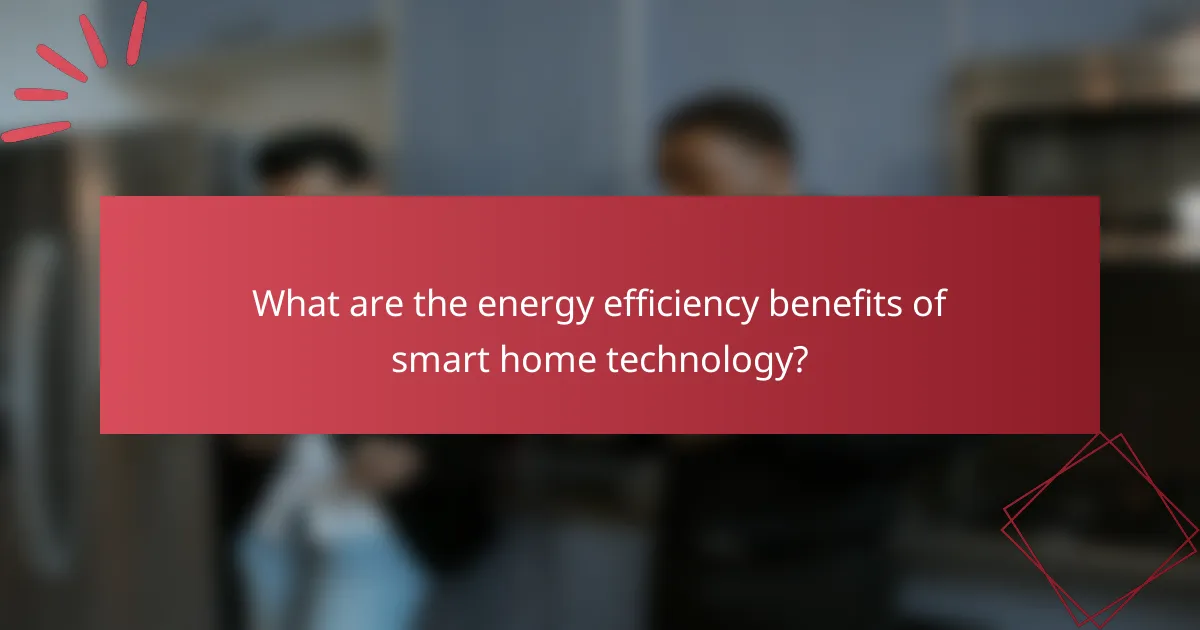
What are the energy efficiency benefits of smart home technology?
Smart home technology offers significant energy efficiency benefits by optimizing energy consumption and reducing waste. Through various devices and systems, homeowners can monitor usage, automate controls, and enhance overall efficiency, leading to lower utility bills and a reduced carbon footprint.
Energy monitoring devices
Energy monitoring devices track real-time energy consumption, allowing homeowners to identify patterns and areas of waste. These devices can provide insights into which appliances use the most energy, helping users make informed decisions about usage and upgrades.
Many energy monitors connect to smartphones or home networks, enabling remote access and alerts for unusual consumption spikes. This capability can prompt immediate action to address inefficiencies, potentially saving tens of percent on energy bills.
Smart appliances
Smart appliances are designed to operate more efficiently than traditional models, often featuring energy-saving settings and connectivity options. For example, smart refrigerators can adjust their cooling based on usage patterns, while smart washers and dryers can optimize water and energy use based on load size.
By replacing older appliances with smart versions, homeowners can see substantial reductions in energy consumption. Many smart appliances are also eligible for rebates or incentives, making them a financially savvy choice in the long run.
Automated energy-saving modes
Automated energy-saving modes allow smart home systems to adjust settings based on user habits or time of day. For instance, smart thermostats can lower heating or cooling when no one is home, which can lead to significant savings over time.
Homeowners should consider setting schedules for devices to maximize these savings. For example, programming lights to turn off during daylight hours or adjusting heating settings during peak energy pricing can further enhance energy efficiency.
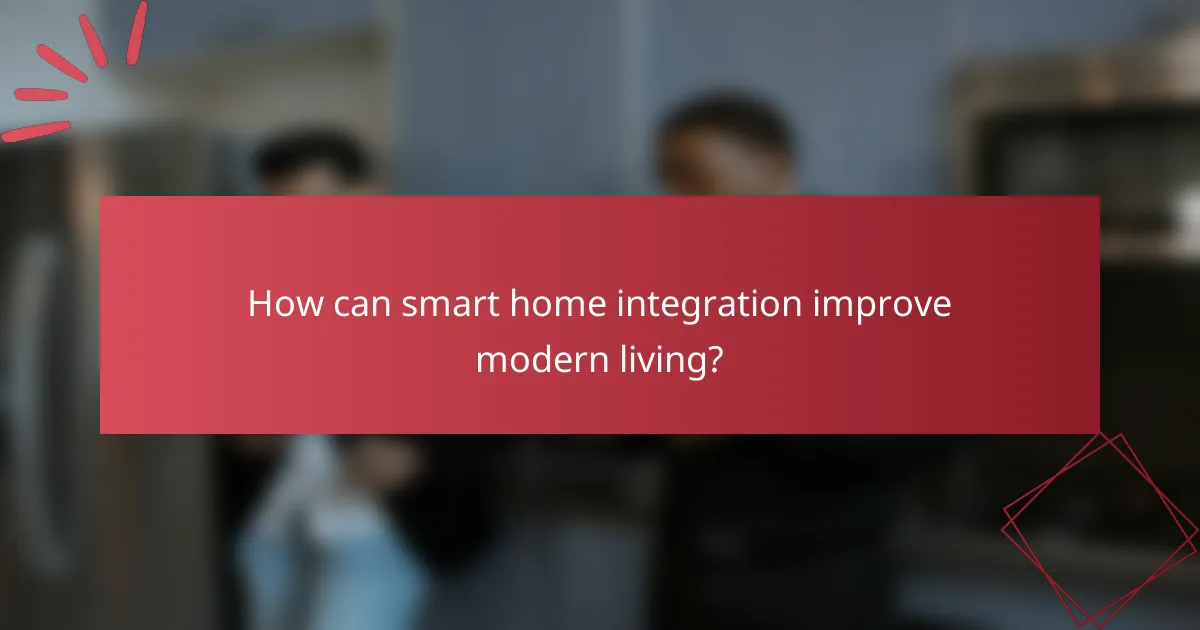
How can smart home integration improve modern living?
Smart home integration enhances modern living by providing convenience, improving energy efficiency, and increasing security through interconnected devices. This technology allows homeowners to control various aspects of their home environment remotely, leading to a more streamlined and efficient lifestyle.
Enhanced security systems
Smart home integration significantly boosts security through devices like smart locks, cameras, and alarm systems. These systems can be monitored and controlled via smartphones, allowing homeowners to receive real-time alerts and manage access from anywhere.
Consider implementing features such as motion detection and remote access controls to enhance your home’s security. Many systems also integrate with local law enforcement, providing an added layer of protection.
Home entertainment integration
Integrating home entertainment systems allows for seamless control of audio, video, and streaming services from a single interface. Smart speakers, TVs, and media players can be synchronized to create a cohesive entertainment experience throughout the home.
For optimal enjoyment, consider using voice commands or mobile apps to manage devices. This integration can also facilitate multi-room audio setups, enabling you to enjoy your favorite music or shows in any part of your home.
Health monitoring solutions
Smart home technology can support health monitoring through devices like smart thermostats, air quality sensors, and fitness trackers. These tools help maintain a healthy living environment by regulating temperature and monitoring indoor air quality.
To maximize health benefits, consider devices that track your activity levels and sleep patterns, providing insights that can lead to healthier lifestyle choices. Regularly review the data these devices provide to make informed adjustments to your daily routine.
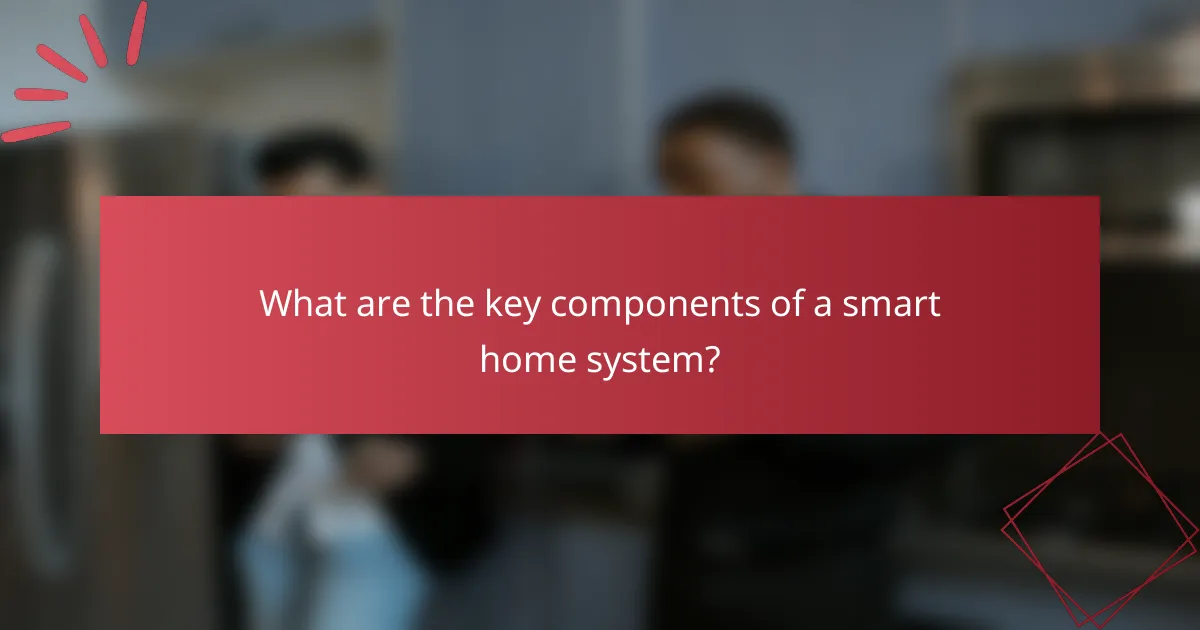
What are the key components of a smart home system?
A smart home system consists of interconnected devices that enhance convenience and energy efficiency in modern living. The key components include smart hubs, connected devices, and wireless protocols that enable seamless communication and automation.
Smart hubs
Smart hubs act as the central control unit for a smart home system, allowing various devices to communicate with each other. They can connect to multiple devices from different manufacturers, simplifying the user experience. Popular examples include Amazon Echo, Google Nest Hub, and Samsung SmartThings.
When choosing a smart hub, consider compatibility with your existing devices and the range of features offered, such as voice control and automation capabilities. Ensure the hub supports the wireless protocols used by your devices for optimal performance.
Connected devices
Connected devices are the smart appliances and gadgets that perform specific functions within a smart home system. These can range from smart thermostats and lighting systems to security cameras and smart locks. Each device enhances convenience and can contribute to energy savings.
When selecting connected devices, prioritize those that integrate well with your smart hub and meet your specific needs. Look for energy-efficient models that offer remote control and automation features to maximize the benefits of your smart home.
Wireless protocols
Wireless protocols are the communication standards that enable devices to connect and interact within a smart home system. Common protocols include Wi-Fi, Zigbee, and Z-Wave, each with its own strengths and limitations regarding range, speed, and power consumption.
Understanding these protocols is crucial when building your smart home. For instance, Zigbee and Z-Wave are often preferred for low-power devices due to their extended battery life, while Wi-Fi is suitable for high-bandwidth applications. Ensure your devices support the same protocol for seamless integration.
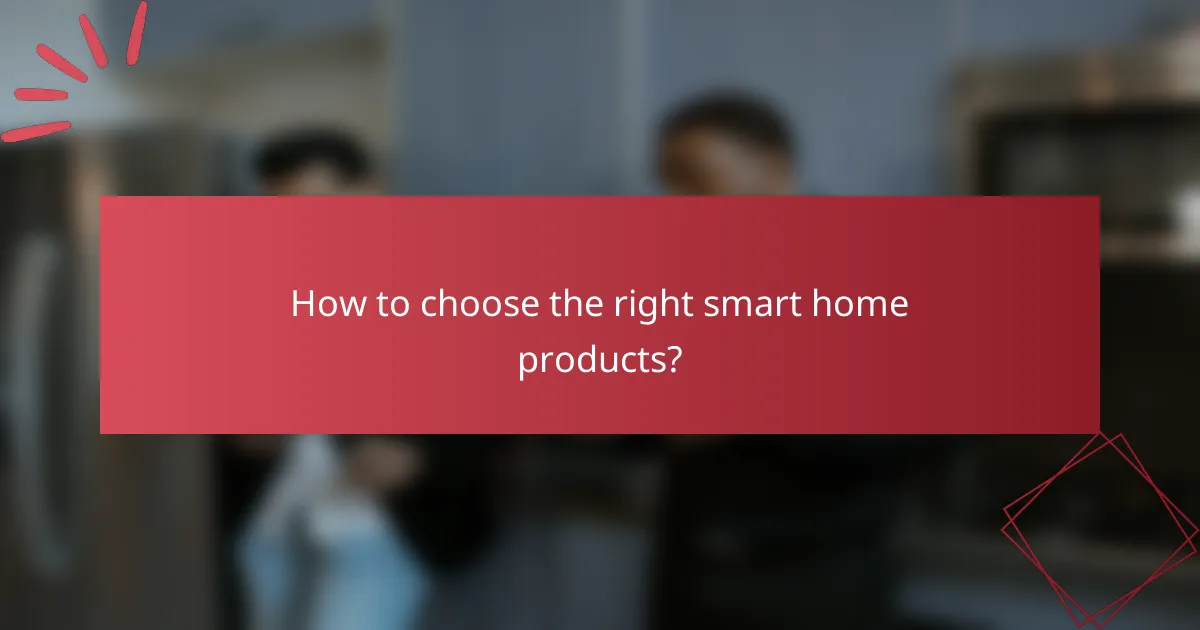
How to choose the right smart home products?
Choosing the right smart home products involves assessing compatibility, scalability, and brand reliability. Focus on how well the devices work with your current setup, their potential for future upgrades, and the support offered by manufacturers.
Compatibility with existing systems
Ensure that new smart home products can seamlessly integrate with your current devices and systems. Look for products that support common protocols like Wi-Fi, Zigbee, or Z-Wave, as these are widely used in smart home technology.
Check if the devices can connect to your existing smart hub or platform, such as Google Home or Amazon Alexa. Compatibility can save you time and money, as you won’t need to replace your entire system.
Scalability for future upgrades
Consider how easily you can add new devices to your smart home ecosystem. Choose products that allow for expansion without requiring a complete overhaul of your existing setup.
Look for systems that offer modular options or support a wide range of devices. This way, you can start with a few essentials and gradually enhance your smart home as your needs change.
Brand reliability and support
Research the reputation of brands before making a purchase. Reliable brands often provide better customer support, regular updates, and a more robust ecosystem of products.
Read reviews and check ratings from other users to gauge the performance and longevity of the products. A strong warranty and responsive customer service can also be indicators of a trustworthy brand.

What are the costs associated with smart home integration?
The costs associated with smart home integration can vary widely based on the complexity of the system and the devices chosen. Homeowners typically spend anywhere from a few hundred to several thousand dollars to set up a fully integrated smart home environment.
Initial setup costs
Initial setup costs for smart home integration include purchasing devices such as smart speakers, thermostats, lights, and security systems. Basic systems may start at around $200, while comprehensive setups with multiple devices can exceed $2,000. Installation fees may also apply, especially for hardwired devices.
Ongoing expenses
Ongoing expenses can include subscription fees for cloud services, maintenance, and potential upgrades. Many smart home devices offer premium features that require monthly or annual subscriptions, typically ranging from $5 to $20 per month. Additionally, energy costs may fluctuate based on the efficiency of smart devices.
Potential savings
Smart home integration can lead to potential savings through improved energy efficiency and reduced utility bills. For instance, smart thermostats can lower heating and cooling costs by optimizing usage, potentially saving homeowners 10-15% on energy bills. Over time, these savings can offset the initial investment in smart technology.
